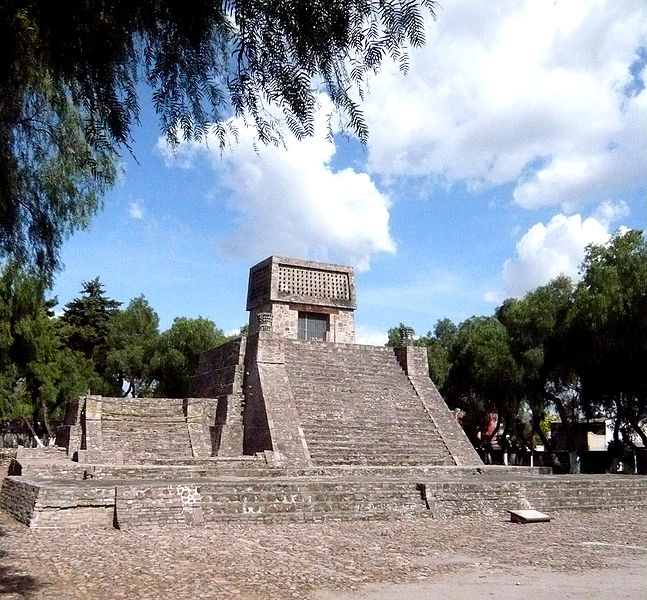Tawantinsuyu: The Inca Empire
Tawantinsuyu is the Quechua name for the empire. It literally translates to "The Four Regions" for each of the four Suyus, or regions. The capital city of the Incan empire was Cusco and the city rested on the spot that all four Suyus met. Quechua was the native language.
Though the Incan empire lasted less than 100 years, it made up for its relatively short existence with impressive accomplishments. During that period, the empire had conquered an area that was almost equal to that of the vast Roman Empire during its peak.
The Empire was located in what is now Peru, and it is believed to have begun sometime around 1450. They started out as a tribe under the leadership of Manco Capac and then organized themselves into a city-state called Qosqo. In 1438, under Pachacuti, they undertook an expansion campaign that conquered an area the size of the original Thirteen US Colonies. Pachacuti then organized his people into a kingdom with a federalist system, and built Machu Picchu. They expanded north in 1463.
Then, the Spanish came in 1526, enamored by the wealthy region. As a succession war was being fought at that time, the empire was severely weakened. Francisco Pizarro was the first to engage the Incas in war in 1532, capturing the king Atahualpa. They offered Pizarro gold and silver in exchange for the king, but the Spaniards took the ransom and put Atahualpa to death in 1533. The Spanish put his brother, Yupanqui, in power, probably requiring him to
learn Spanish. In 1572, the Inca Empire came to an end.
The Inca Rulers
Manco Capac - Sun God
The first ruler of the Inca, Manco Capoc, is surrounded by myth and legend. There are several versions of the story relating to his life. In one, he is the son of the Sun God Inti and Mama Quilla, which is why he was worshipped as a god. In another, he was a fierce warrior who traveled the land with his brothers and sisters, conquering many tribes to bring unity among the people. Ruling for forty years, he was credited with abolishing human sacrifice, and outlawing incest for everyone, but nobility.
Sinchi Roca
The second king, Sinchi Roca, was Manco Capac’s son. Myths claim that he led his family to the valley of Cuzco. The most famous story associated with him is that of Teuotihi, an Incan diplomat sent to a neighboring kingdom to deliver a message. Upon arrival, he was decapitated and returned to Sinchi Roca. Outraged, he launched a war and won the Battle of Mauedipi. After his reign, Sinchi became the Quechua word for “mayor” just as his father’s name, Capac, became the word for “warlord.”
Lloque Yupanqui
This third king established the public market in Cuzco and built the Acllahuasi, a place where young men and women were gathered to be given out as concubines to nobility or to be dedicated to the cult of the sun god. He was known as “"The Unforgettable Left-Handed One” because he was so ugly.
Maita Capac
Maita Capac’s reign was one of the most glorious for the Incas because he reigned with firmness. He put down many rebellions that had begun under the previous ruler’s reign, including important territories that had escaped Incan rule. He also built many palaces and monuments in Cuzco.
Capac Yupanqui
Capac Yupanqui is known in Incan lore as the great conqueror. He is believed to be the first ruler to successfully conquer territory outside the Cuzaco valley. He also improved many of Cuzco’s roads, buildings, and aqueducts.
Inca Roca
Inca Roca was the king who conquered many peoples, including the Chancas. He also established the yachaywasi, a school for nobles, and improved irrigation techniques.
Yahuar Huacac
According to legend, his name means “blood-crying Inca” because he was kidnapped at age 8 by the Ayarmaca, crying tears of blood. He escaped and returned to his country with the help of a mistress. Yahuar Huacac is said to have abandoned Cuzco when it was under attack from the Chanca, but his son saved the city.
Inca Viracocha
Inca Viracocha played a key role in the finale battle between the Chancas and Incas, but there are conflicting reports as to what actually happened. Some say he abandoned the city like his father, but others insist that he defeated the enemy, and rescued the town. He was considered the first Incan to just rule his country instead of just trying to take over more land.
Pachacuti-Inca-Yupanqui
Pachacuti-Inca-Yupanqui transformed the empire from the Kingdom of Cuzaco in the empire of Tawantinsuyu. His name literally means “He who remakes the world.” During his reign, Cuzco went from a small hamlet into a vast empire that within 3 generations had managed to conquer nearly the whole of South America.
Huayna Capac
One of the greatest Inca rulers, Huayna Capac was as famous for his conquests as his reproduction prowess, fathering over 50 children. He extended the empire significantly south, and before his death, he split his empire between his favorite son, Atahualpa, and the one designated to be heir, Huascar. Highly respected as a leader, it’s ironic that the fall of the Inca Empire might have stemmed from his indecision to appoint an outright heir.
Atahualpa
The final leader of the Inca, he defeated his older half-brother, Huascar, during a civil war that occurred after Huayna Capac died. This significantly weakened the empire, allowing Atahualpa to be taken for ransom by the Spanish. Atahualpa was executed by the Spaniards in 1533.
The Inca Achievement
The Incan people are attributed with the birth of hand weaving. They also had an incredible road system. In their engineering field, they lacked paper so they designed buildings using clay models, using things like sliding scales, bronze tools, and plumb bobs. They also used ramps and rollers to construct their masterpieces like Macchu Picchu. Their buildings were made of stone blocks set in mortar while adobe walls were laid over stone foundations. Most were also rectangular with no internal walls.
They conquered their enemies with a very strict military system. Every single Incan male was capable of combat and subject to a draft. Soldiers who abused civilians were whipped or executed. There were two classes of men: higher-up members of the ruling caste, and the native men. They used lances and clubs and they wore armor of wood or cane. Their advanced road system also made them excellent conquerors because they could move and send messages much more quickly than other peoples could.
The Incan record keeping system was unique. Known as quipu, or talking knots, it was a kind of recording device. Made from dried thread that was colored and cotton cords that had numerical cords with numeric values associated with them, it was specifically a base-ten positional system. They typically had around 2,000 cords.






 Guatemala and its neighboring areas, are the habitat of the Euchlæna luxurians, the wild grass, hybridized with Tripsacum spp from which, the Maize
Guatemala and its neighboring areas, are the habitat of the Euchlæna luxurians, the wild grass, hybridized with Tripsacum spp from which, the Maize Zea Luxurians, found only in Guatemala and Nicaragua (formerly Zea Guatemala) is derived. It is named "Teosinte" a name that came with the first Guatemalan accession and seems not to have been used in ancient Mexico, the Zea Mays is the variety developed by cultivation. Zea mays ssp. huehuetenangensis is the only teosinte polen, with the same size of the modern Maize. No teosinte has been found in the Caribbean watershed of lowland Mesoamerica, the Isthmus of Tehuantepec and the Yucatan Peninsula.
Zea Luxurians, found only in Guatemala and Nicaragua (formerly Zea Guatemala) is derived. It is named "Teosinte" a name that came with the first Guatemalan accession and seems not to have been used in ancient Mexico, the Zea Mays is the variety developed by cultivation. Zea mays ssp. huehuetenangensis is the only teosinte polen, with the same size of the modern Maize. No teosinte has been found in the Caribbean watershed of lowland Mesoamerica, the Isthmus of Tehuantepec and the Yucatan Peninsula.